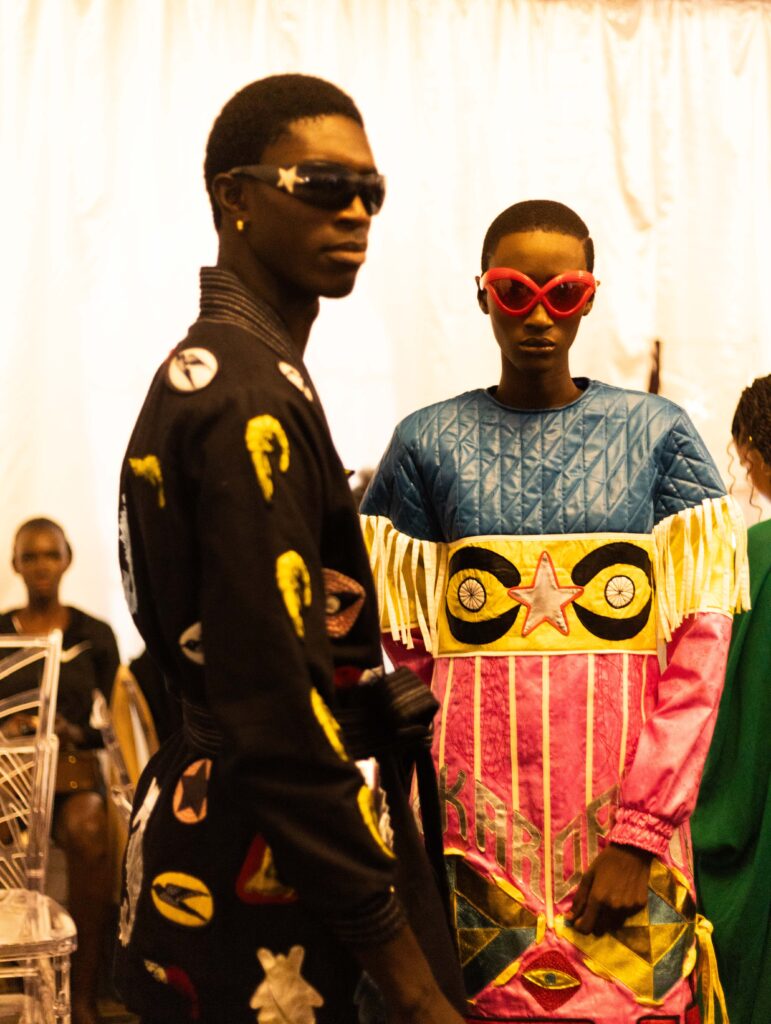
Dakar, perched at the western edge of Africa, is no stranger to spectacle. But on the eve of May 2nd, 2025 beneath the resolute gaze of the Monument to the African Renaissance, it played host to something more than a fashion show. It became a stage for a movement. The second edition of the Best African Runway, a cultural side event of the Basketball Africa League, unfolded not merely as a celebration of fashion — but as a manifesto of African futurism. The initiative, led by Africa Tourism Solutions, AfroFuture, Outside Dakar, The Fashion Curator, and Dimension Agency, brought together 10 designers from Senegal and Ghana to redefine what African elegance means — today and tomorrow.
Against the heartbeat of drums, neon lights, and a crowd of trendsetters, celebrities, and cultural architects, the runway came alive. Ten designers. Two nations. One singular message: Africa doesn’t follow the runway — it paves it.
Most collections danced in dialogue with the upcoming 2025 Met Gala theme, Superfine: Tailoring Black Style. But make no mistake — this wasn’t mimicry. This was mastery. Black elegance tailored with precision, power, and poetry. These were garments that stitched identity, resistance, and aspiration into every thread.
Let’s take a closer look — not just at garments, but at genius.
Selly Raby Kane — Myth in Motion
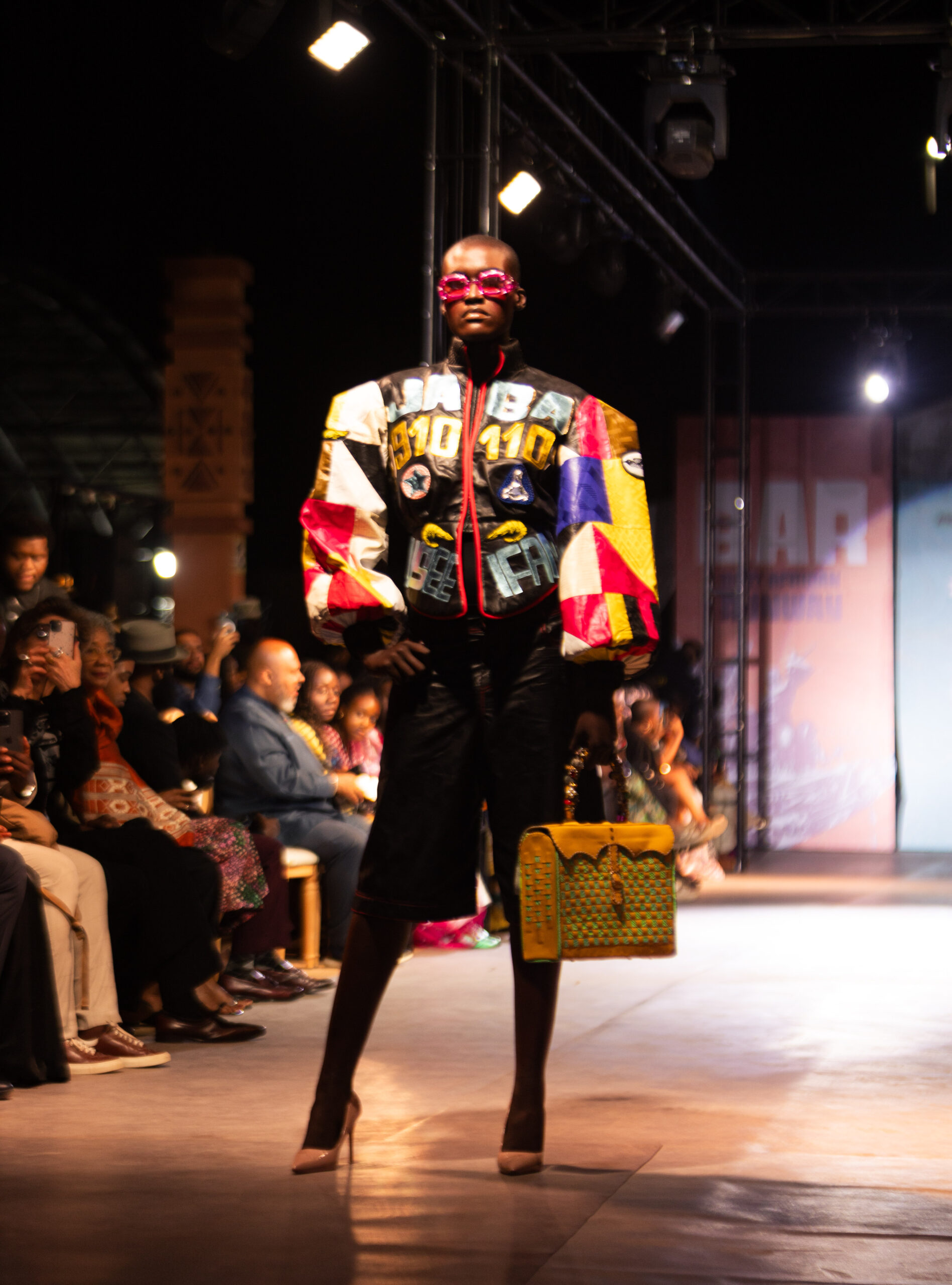
The opening act was no mere curtain-raiser. Selly Raby Kane, the doyenne of Dakar’s fashion underground, delivered a show that felt like Dakar’s urban myths walked onto the runway. Wax cutouts collided with vegan leather. Bazin scraps evoked Baye Fall mysticism. Her trademark kimonos — now cropped, long, sleeveless, reimagined — told of a designer in constant conversation with the streets of her city. This wasn’t a collection. It was a fever dream — a grunge fairytale dipped in Senegalese folklore. Her garments, though rich in texture, demanded minimalist accessories. Why? Because the clothes themselves did the talking — loud, irreverent, unapologetically bold.
Kane’s work is a testament to her ability to blend the traditional with the avant-garde. Her pieces are not just garments; they are narratives that speak to the complexities of urban African identity. By incorporating elements of local culture and folklore into contemporary designs, she challenges the conventional boundaries of fashion and art. Her collection is a bold statement that African fashion is not monolithic but a dynamic and evolving tapestry of stories and influences.
L’Artisane x Nio Far — Whimsy Wears Sneakers
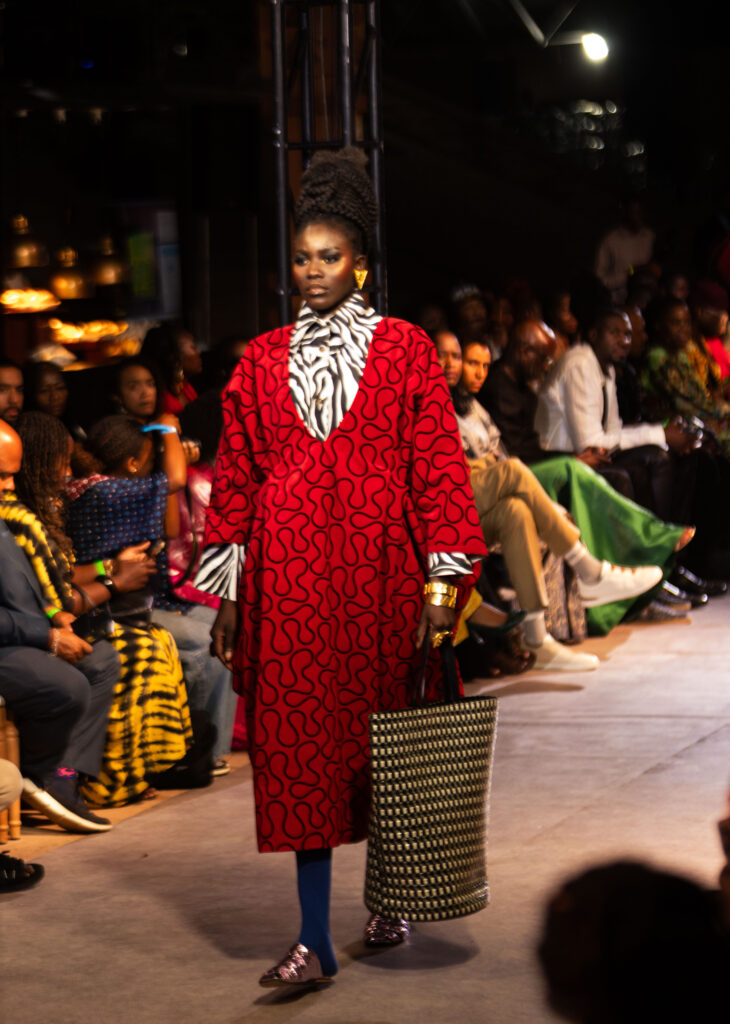
What happens when maximalist romance meets rebellious streetwear? A riot of colors, prints, and purpose. L’Artisane and Nio Far presented a dreamscape stitched with defiance. Think tutu skirts paired with sport jerseys. Think brocade caftans worn with cartoon socks and iconic Nio Far sneakers. The synergy was electric. Nio Far brought structure, L’Artisane brought soul, and together they created a silhouette that defied logic and loved louder. Statement jewelry, golden bunny earrings, architectural totes — every detail screamed maximalism with meaning. The result? An audacious dialogue between the traditional and the fantastical.
This collaboration is a celebration of youthful exuberance and cultural pride. By merging elements of traditional African attire with contemporary streetwear, the designers challenge the status quo and redefine what it means to be fashionable in a modern African context. Their collection is a vibrant tapestry that reflects the diversity and dynamism of African youth culture, making a powerful statement about identity and self-expression.
Al Gueye — Tailoring the Sahel
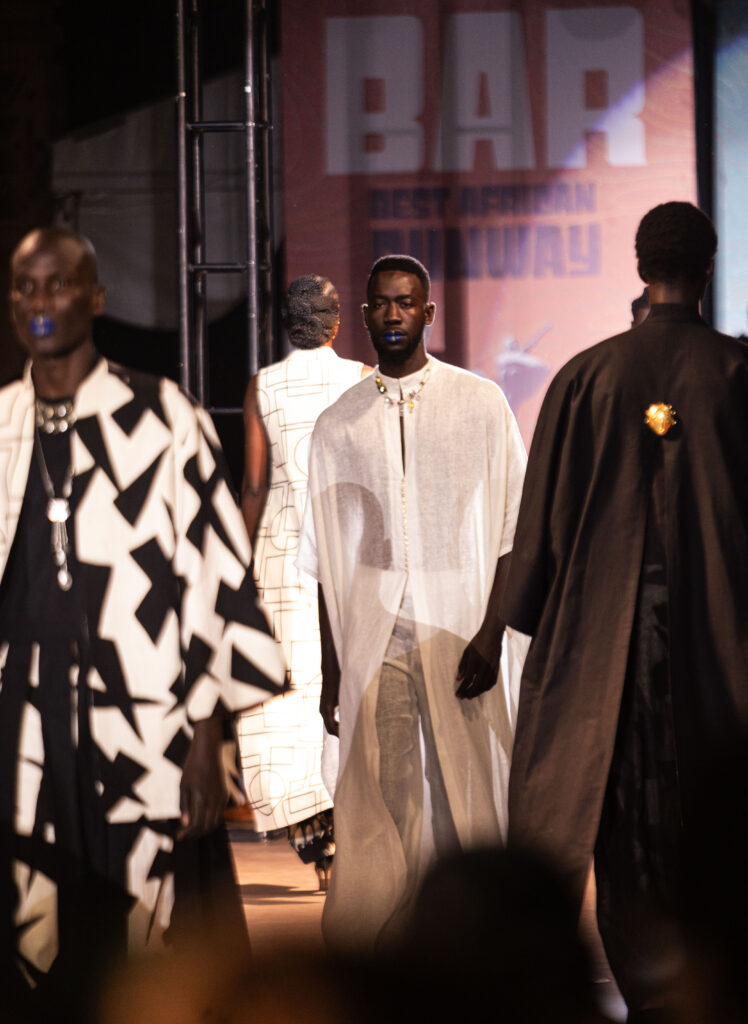
Here lies the quiet majesty of African menswear. Al Gueye’s collection was not just clothing; it was a ceremony. Monochrome and earth tones dominated: black, white and clay brown. Linen, cotton, and semi-sheer fabrics draped the models like desert winds. This was the Sahel — reimagined and regal. Nomadic jewelry glinted under runway lights. Subtle gold embroideries whispered from coat backs. Each garment — whether a flowy tunic or structured dust coat — echoed ancestral elegance. Al Gueye doesn’t dress men in trends. He robes them in dignity.
Gueye’s designs are a homage to the rich cultural heritage of the Sahel region. By incorporating traditional fabrics and silhouettes into his collection, he pays respect to the past while envisioning a future where African menswear takes center stage in the global fashion arena. His work is a reminder that elegance and sophistication are deeply rooted in African traditions, and that these elements can be seamlessly integrated into contemporary fashion narratives.
Alia Baré — Cosmopolitan Craft
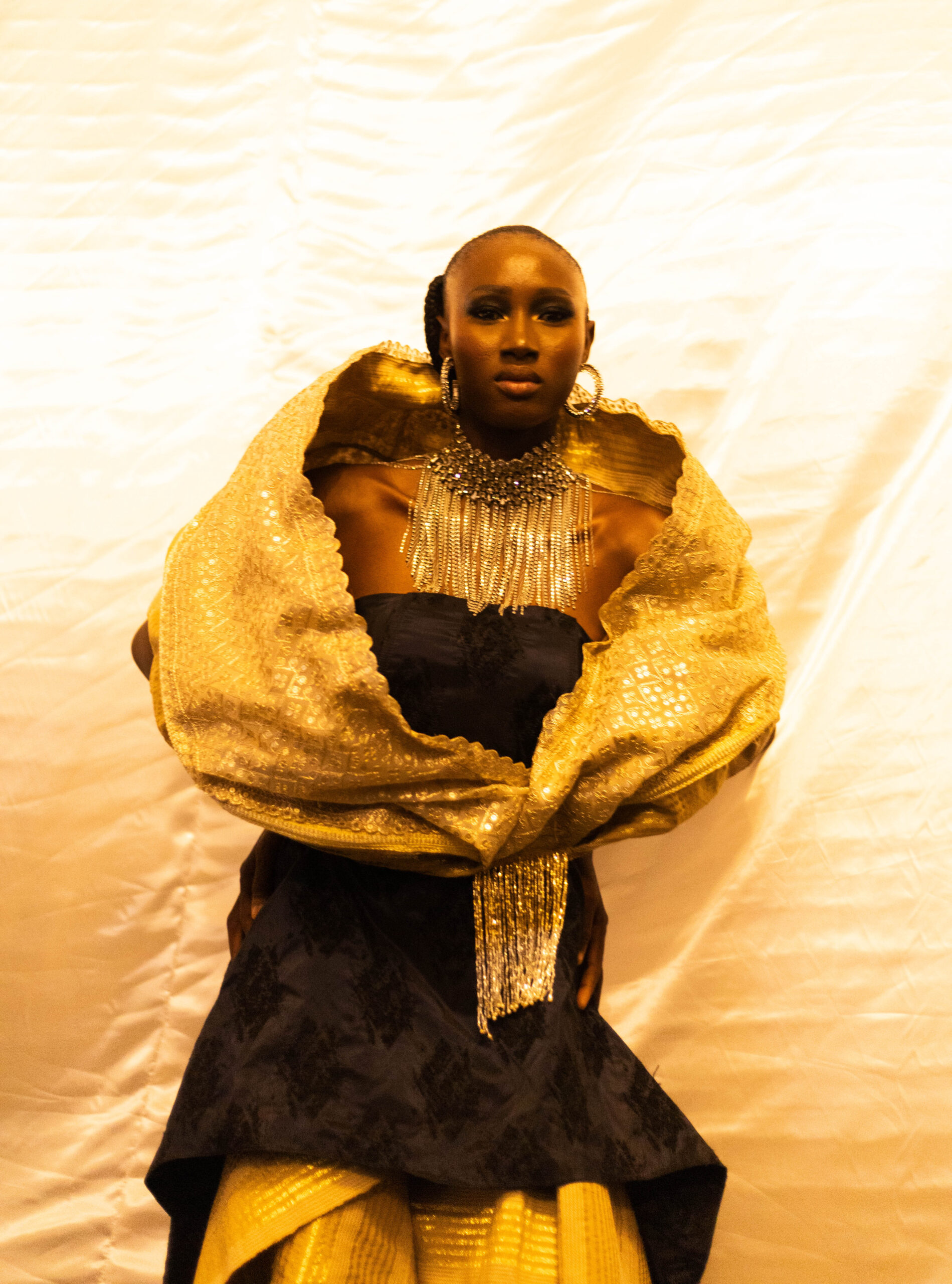
With a foot in Africa and another in the world, Alia Baré’s designs are made for the global citizen. Superfine tailoring met eclectic vision — corseted gowns, beaded suits, and gender-fluid three-piece sets. This was Afro-dandyism redefined. A color story of black, butter yellow, navy, and red grounded the collection, while rich textures — sequins, chains, traditional weaves — elevated it. She doesn’t just dress a body; she tailors identity.
Baré’s collection is a reflection of her personal journey and the diverse influences that have shaped her design philosophy. By blending elements from different cultures and fashion traditions, she creates pieces that resonate with a wide audience while maintaining a strong connection to her African roots. Her work challenges the notion of fashion as a static concept, instead presenting it as a dynamic and inclusive platform for storytelling and self-expression.
Owens — Detail is Divine
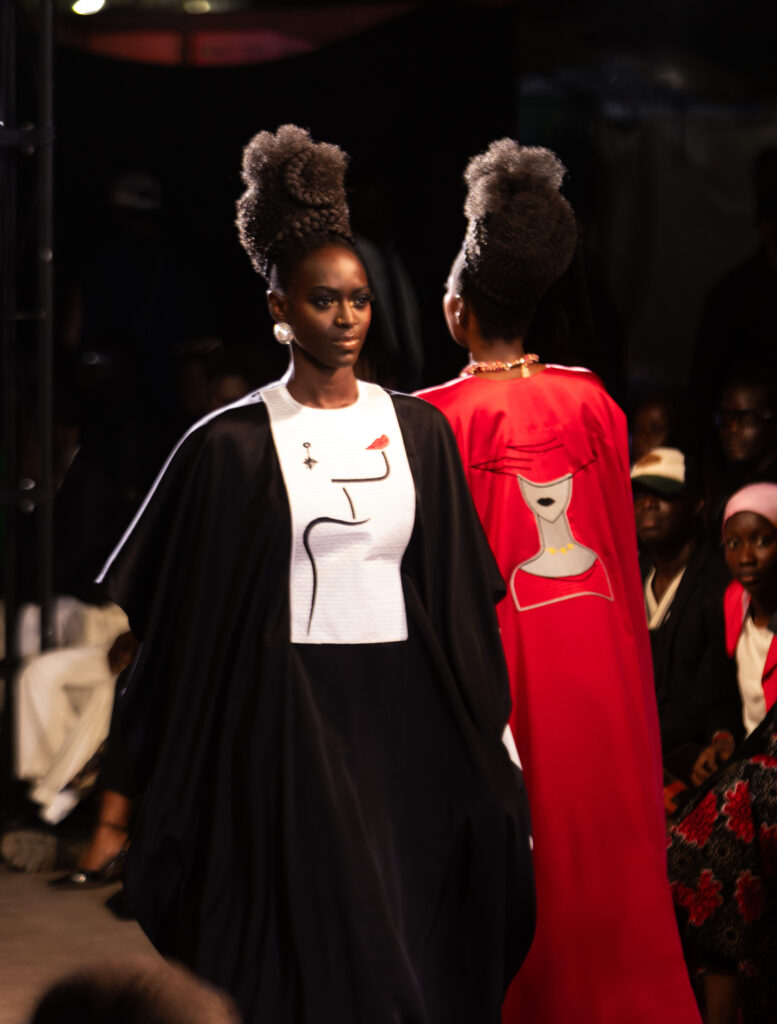
Owens speaks the language of refinement fluently. His pieces are poetry in precision. Lined jackets, hand-stitched lapels, intricate hems — everything whispered luxury. This is couture for the momentous, fashion for the remembered. From black and white prints to Mbubu-inspired flowy gowns, the collection balanced heritage with modernity. Owens proves that subtlety is not silence — it’s sophistication.
His collection is a masterclass in the art of understated elegance. By focusing on the minutiae of garment construction and the quality of materials, Owens elevates each piece to a work of art. His designs are a testament to the power of simplicity and the enduring appeal of classic silhouettes, reimagined through a contemporary African lens.
House of Elegance x Nene Yaya — Where Royalty Rests
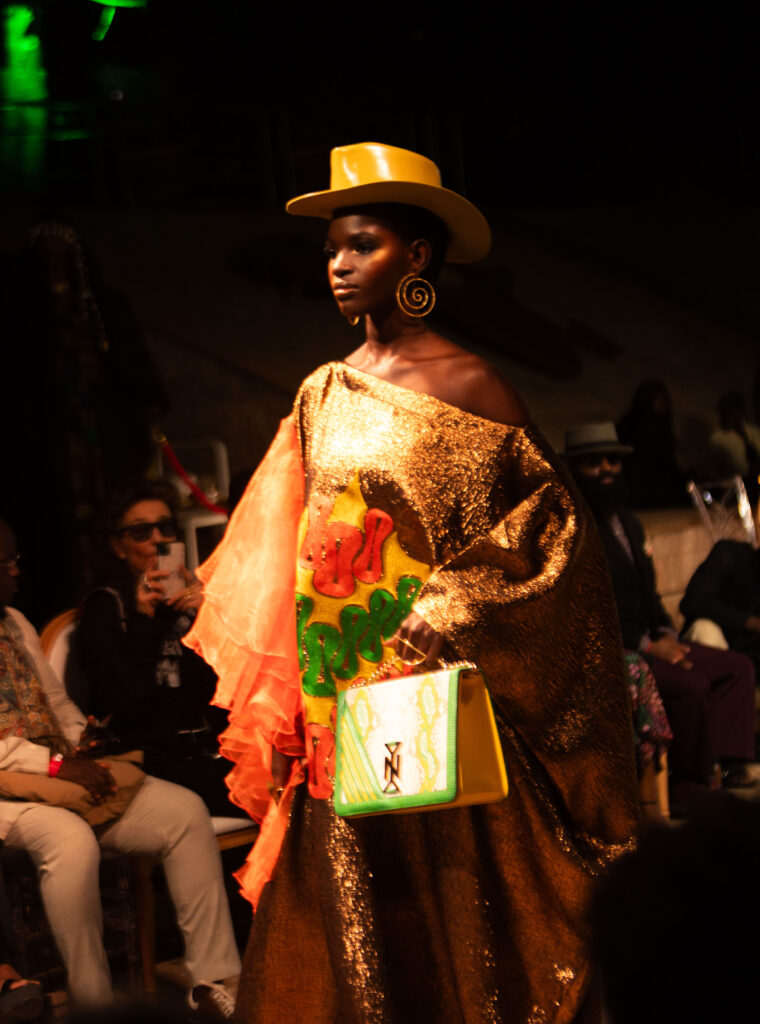
Elegance is not simply worn. It is embodied. And in this collaboration, it reigned. Colorful and extravagant brocade gowns flowed like water. Tailored pants, mermaid skirts shimmered like dusk. And then there were Nene Yaya’s accessories — sculptural, colorful, and commanding. Leather bags as art. Earrings as statements. Every piece was a coronation. This wasn’t fashion — this was sovereignty in motion.
This partnership showcases the synergy between clothing and accessories, highlighting how the right combination can create a powerful visual narrative. The collection exudes confidence and authority, drawing inspiration from regal aesthetics and translating them into modern fashion statements. It serves as a reminder that fashion can be a vehicle for empowerment and a celebration of cultural heritage.
Chocolate Clothes Global — Patchwork with Purpose
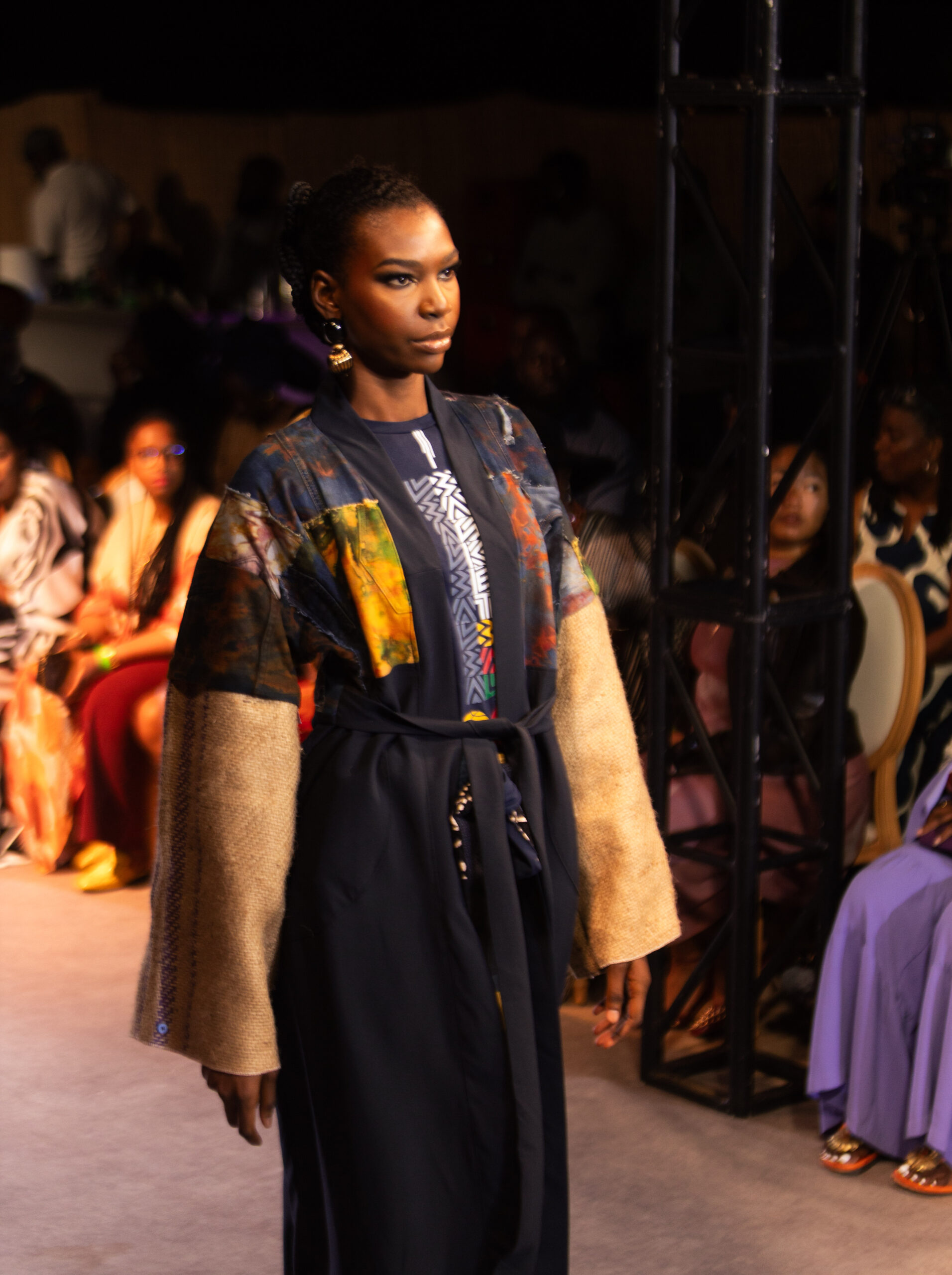
From court to couture, Chocolate turned sportswear into storytelling. Basketballs became bags. Jerseys became trousers and jackets. Tailoring met the street. Every look — a remix of rebellion and rhythm. Denim, neon accents, recycled textiles — this was the swagger of Accra stitched into high fashion. Chocolate plays with perception — and wins.
Chocolates’s collection is a bold exploration of the intersection between sports culture and high fashion. By repurposing athletic materials into couture pieces, he challenges traditional notions of luxury and craftsmanship. His work is a celebration of innovation and sustainability, demonstrating how fashion can be both stylish and socially conscious.
Ketthem — Afro-Metropolitan Chic
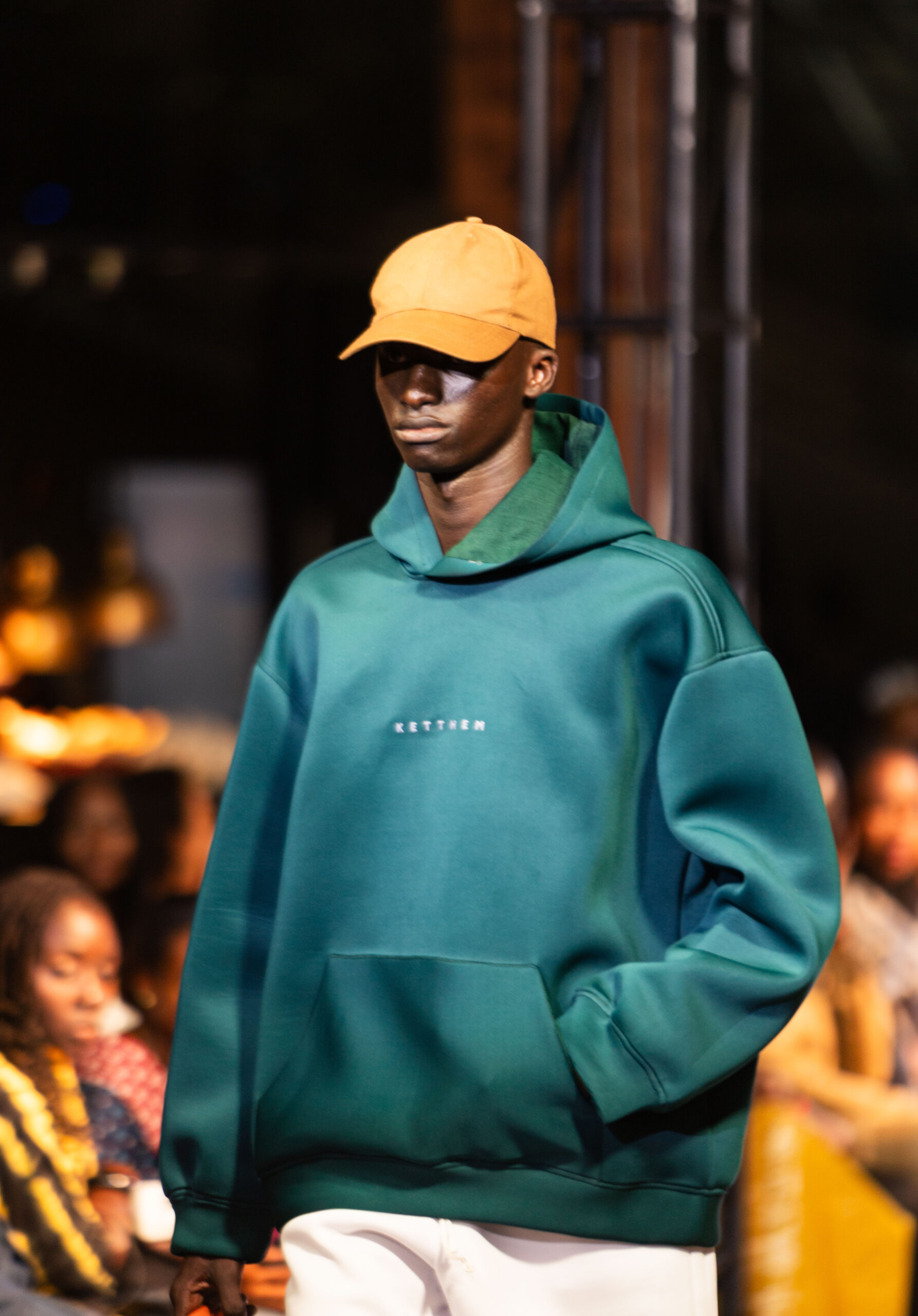
For those who don’t just wear fashion, but live it, Ketthem delivered an ode to the Afro-metropolitan soul. Oversized blazers transformed into dresses, hoodies met skirts and stilettos with unapologetic flair. Polka dots teased both plaid and denim, creating a playful collision of patterns and textures. Gold cuffs and cowboy hats reimagined African streetwear as couture. Ketthem doesn’t follow the beat — it sets it. This was not a collection. It was a lifestyle.
Ketthem’s designs are a vibrant fusion of cultural influences and contemporary trends. By blending traditional African motifs with modern silhouettes and patterns, he creates a unique aesthetic that resonates with a diverse audience. His collection is a testament to the versatility and adaptability of African fashion, proving that it can be both rooted in tradition and forward-thinking.
Ajabeng — Optimism Tailored
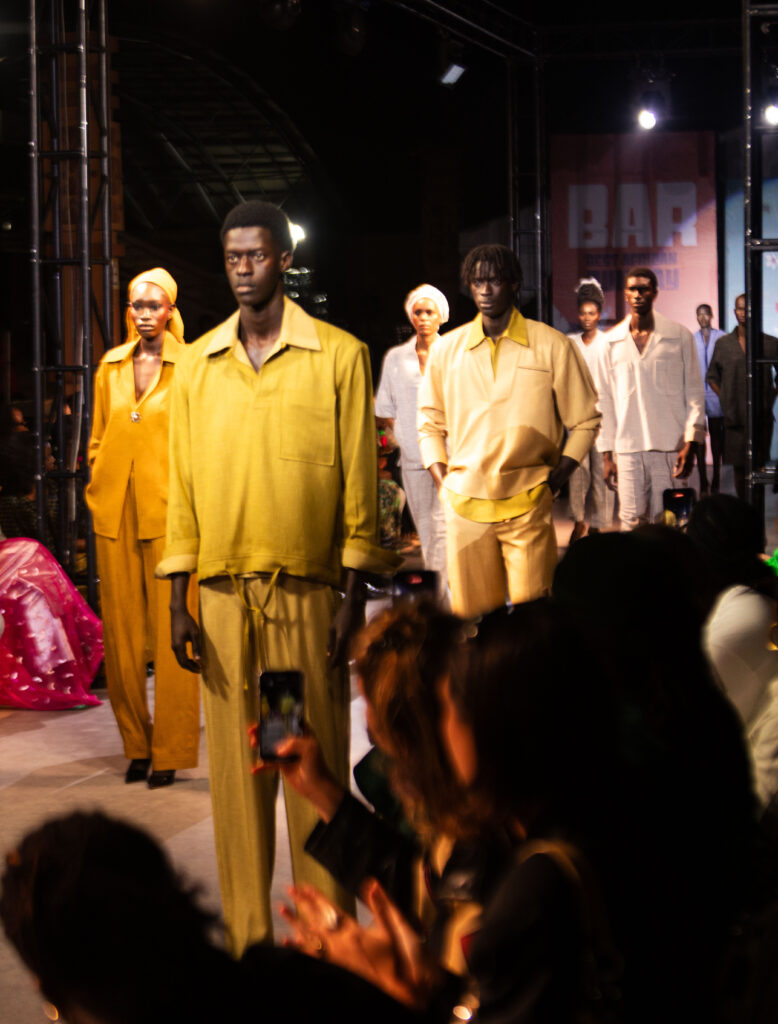
Minimalism met meaning in Ajabeng’s refined offering. Clean cuts, sober turbans, mustard yellows, and greys — every piece whispered intention. But behind the simplicity lay complexity: sustainability, fair labor, and heritage. This was fashion for the future, designed with care and worn with pride.
Ajabeng’s collection is a thoughtful exploration of how fashion can be both aesthetically pleasing and ethically responsible. By focusing on sustainable practices and ethical production, the brand sets a new standard for what it means to be a modern fashion label. Their designs are a reminder that style and substance can coexist harmoniously.
Subwae — Structure with Soul
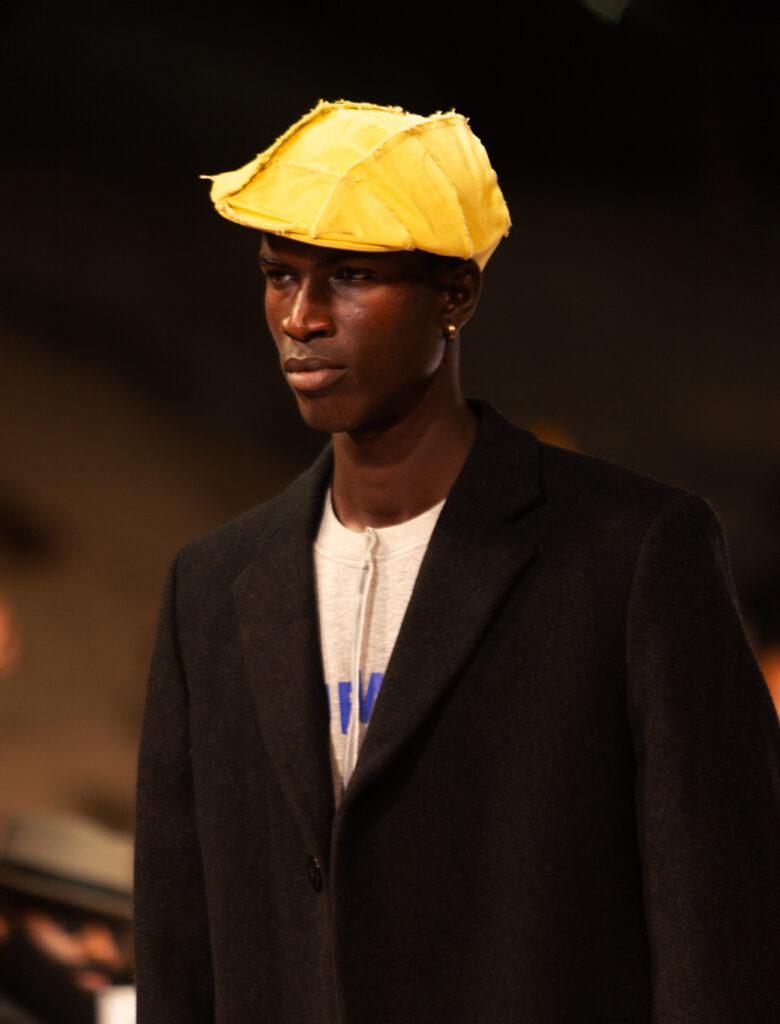
If architecture had a wardrobe, it would be Subwae. Blazers with sculptural sleeves, handwoven textures, and monochrome palettes told stories not just of style, but of purpose. A brand rooted in sustainability, Subwae builds fashion with ethics as its foundation and elegance as its silhouette.
Subwae’s designs are a testament to the power of structure and form in fashion. By drawing inspiration from architectural principles, the brand creates pieces that are both visually striking and deeply meaningful. Their commitment to sustainability and ethical production further underscores the importance of intentionality in design.
The Future Is Here — and It’s Dressed in Africa
The Best African Runway was more than a fashion show. It was a declaration — that African design is not emerging. It has arrived. Rooted in tradition, refined by global influence, and driven by visionaries who are reshaping style as cultural sovereignty. From Dakar to Accra, these designers showed that to wear African fashion is not just to make a statement — it’s to carry a story.
And the world is watching. As it should.